Couch to 5K: Benefits, tips and the best Couch to 5K plan
We explain the concept behind the Couch to 5K programme and how it can get you running miles in months

Couch to 5K is a concept that does exactly what you’d expect; to take people from doing no exercise at all through to being able to run 5K – or 3.1 miles if you prefer – after following a training plan. It’s not that simple, of course, as every individual will be starting from a different point: a different level of fitness, a different day-to-day lifestyle and a different health outlook. However, the joy of the programme is that anyone can follow it and set their own goals.
The original Couch to 5K Running Plan was devised by an American man called Josh Clark in 1996. He was fairly fit and only 20 years old; he knew that running would be of benefit to him if he could stick with it, but he hated it. He found the process of running difficult; he wheezed, had sore muscles and found it painful. During a period of particular determination, he pushed through this initial discomfort, rather than giving up as he had before, and it was a revelation to him. He realised that running didn’t have to hurt and it was worth it for the many benefits it gave him in the long term.
After his running epiphany, Clark was keen to spread the word about his new-found love and prove that anyone can become a runner. He built a website with everything he had learned during his journey to becoming a runner, which led to the creation of the Couch to 5K Running Plan. While writing the plan, he used his mum as inspiration, devising a programme that she could follow to get active.
Over the last 11 years, the couch to 5K concept has taken off in a massive way. The original programme has an accompanying app, also called Couch to 5K, which has now helped thousands of runners to get started. The original Couch to 5K programme has expanded and developed, and the concept of getting people who were previously inactive to start running has spread worldwide.
There are many similar programmes available; most running clubs and beginner running groups will follow their own version of it. Nowadays, when people say that they are taking part in a ‘couch to 5K’ programme, it could mean any number of different plans, all of which work in the same progressive fashion. They range from eight to 10 weeks, though the original programme was nine weeks.
Zen Labs has produced the popular C25K app, as well as many other fitness-related apps that are used by Couch to 5K graduates. The NHS also has its own supported the Couch to 5K running programme. This is presented as a series of podcasts (also available as an app), with a narrator talking through the different sessions each week.
But it doesn’t matter what couch to 5K programme you choose to follow. We have included a plan below, which will get you running 5K in 10 weeks and it follows the same basic principles as the original Couch to 5K Running Plan. Before you get started on that, though, it is worth understanding how couch to 5K works and why it’s different from other beginners’ running programmes.
Start your week with achievable workout ideas, health tips and wellbeing advice in your inbox.
Couch to 5K: Progressive steps that build to pay off
The way that any couch to 5K programme works is to build up slowly and steadily in order to ensure that you don’t suffer any injuries, aches or pains. It’s not uncommon for someone who hasn’t previously run to decide they’d like to try it, go out for a few runs from scratch and then give up, because they hurt themselves or find it too difficult.
This structured, progressive way of building up lets your body get used to the strains of running, helps to build a fitness base and breaks it all down into manageable chunks. Right at the beginning of the programme, you may feel like 5K is a long way and certainly not something that you’ll be able to run in just 2.5 months! However, it’s a proven method that has worked for a huge amount of people, so have a little faith!
The key to the programme is that it doesn’t send you out running too soon or in big chunks. It is based on a walk/run concept and in those first few sessions, it is more walking than running. In fact, the very first time you head out the door, trainers on, you are only running for one minute at a time. It might feel like a very long 60 seconds, but it will be over before you know it and then you’ll be back to walking.
- Need to start slower? Here's our guide to walking to lose weight
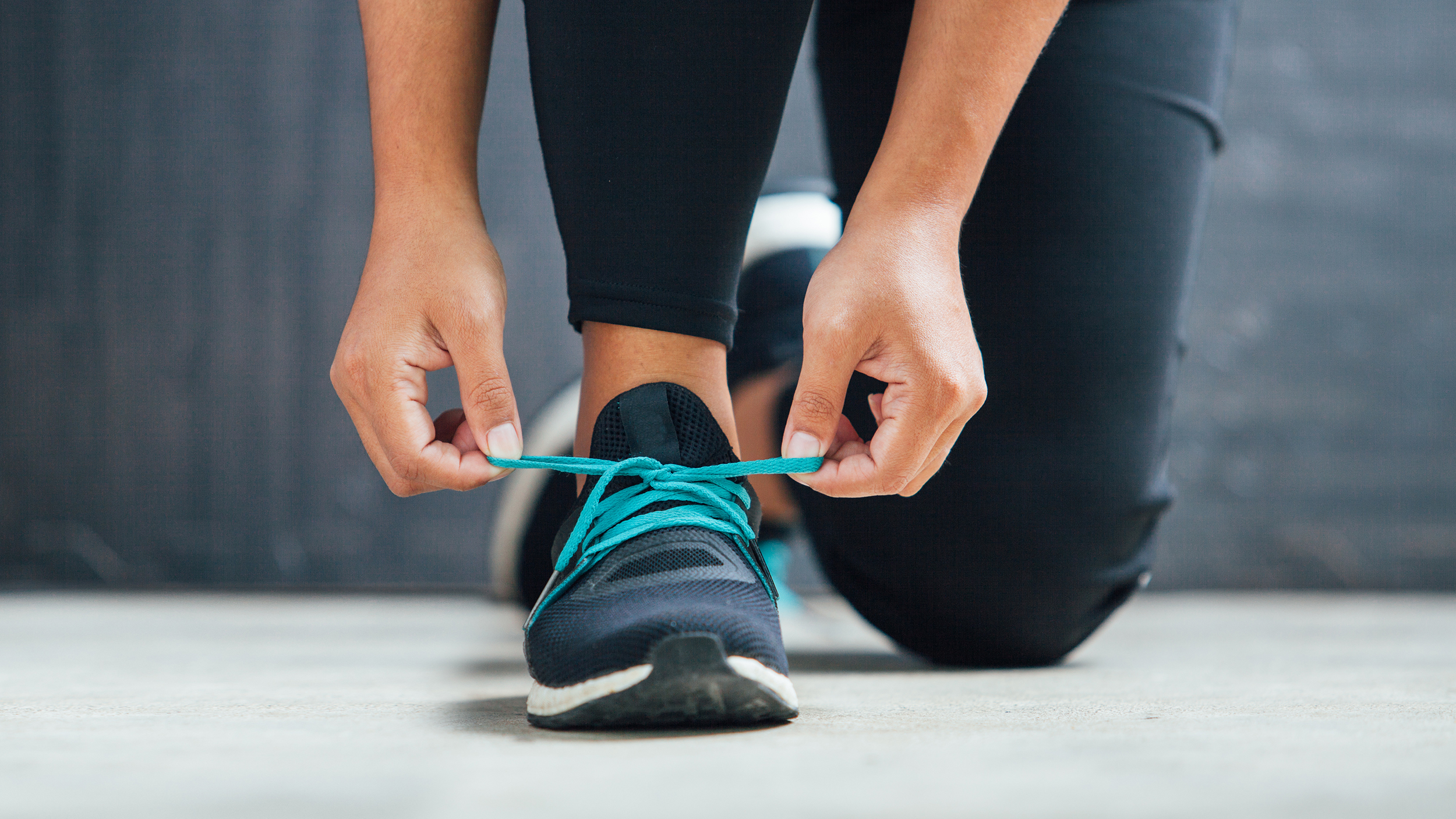
Over the course of the programme, two things happen. First, the run sections get a little longer each time, and second, the walk breaks get a little shorter. This doesn’t all happen at once. When you first increase your running time, the walk breaks are longer so that you are properly recovered between running segments. As the course progresses, you will find that you are able to run for much longer segments and that you won’t need as long to recover as your fitness improves.
The plan is based on three runs a week, which is manageable for most of us. At first, those sessions don’t take very long to complete – you can be done in less than 30 minutes. By Week 10 of our plan, your sessions are around the 45-60-minute mark, and that includes the warm-up and warm down. So, you are committing about three hours a week to your running programme out of the 168 hours you have available. That’s a small amount of time to spare for your long-term fitness and health.
In the UK, the NHS recommends that adults aged 19-64 should aim to do at least 150 minutes of moderate aerobic activity every week, which is 2.5 hours. By following the couch to 5K plan, you are meeting these minimum guidelines. It is also recommended that you are active daily and that you do strength exercises two or more times a week. The couch to 5K plan that we have included below suggests that you try to improve your daily activity levels where you can, even if it’s just small steps, like getting off the bus a few stops early or taking the stairs instead of the lift. ]
The programme also introduces you to strength, flexibility and coordination exercises as part of the warm-up and warm down. Therefore, you could just do everything we suggest below and you would be meeting your physical activity guidelines! All of this will work together to help you get fitter, stronger and healthier than ever before.
Couch to 5K: Make it work for you
It’s important to understand that the couch to 5K plan is not written in stone and you should make sure that it works for you. As we mentioned before, we are all starting from completely different points and this will affect how you progress through the programme.
Let’s say that you are someone who has never exercised before, or maybe used to as a child and haven’t since. It’s not that uncommon, but the fact that you’re reading this website means you have made the all-important first step into improving your health. If you’ve not done any exercise in a long time, it is worth going to your GP for a general health check and to tell them that you are planning on undertaking a couch to 5K plan. They will ensure you are well enough to start and there are no reasons to prevent you from starting a running programme.
TOP TIP: Run with a friend
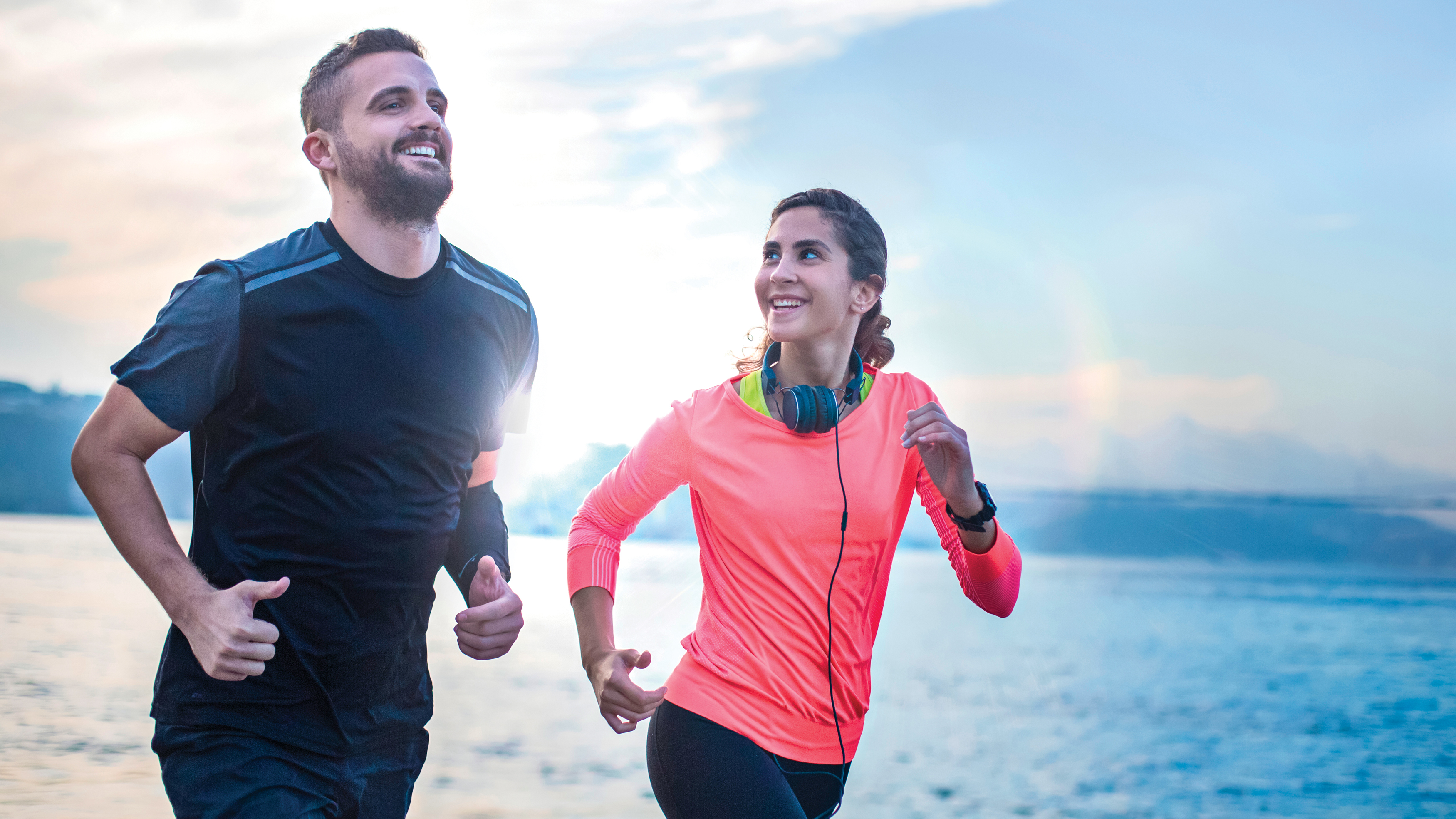
There are many benefits of running with a friend. The most obvious is that it helps to motivate you through each session and you can support each other. But it also means that you have someone else to venture out into the dark winter nights with, which might make you feel safer.
It may be that you are overweight too, which can add some stresses and strains onto your body as you start running. The key is to always listen to what your body is telling you. Never push on in a session if you feel unwell or if you have pain that is sharp or doesn’t go away. You will likely feel uncomfortable, however, during the first few sessions as this is something new that your body will take time to get used to.
So, you have never run before and you are about to embark on this wonderful new challenge. You head out and do the first session, but that 60 seconds of running and walking, which might have seemed simple on paper, is actually quite hard work. This is normal, but it is also the reason that many people quit the programme in the early days.
The best way to view the programme is as a target plan, rather than a fixed plan each time. You are aiming to follow the walk and run times as closely as possible, but if you need to start walking a little sooner, or take longer recoveries, then do it. You are still moving and you are still reaping the benefits.
Also, don’t be too fixed on the 10-week overall goal. Many, many people will have to repeat a session or a whole week and it may, therefore, take longer to get to the final 5K run. However, it is much better to get there steadily and sensibly, than to rush ahead and risk injury. We would suggest that you don’t move on to the following week until you are happy with the previous week. Don’t be afraid to do the same week as many times as you need to; you will find it much easier to move through the programme and stay positive if you are comfortable in what you are doing.
You may also miss a whole week for an unavoidable reason, such as illness, injury or holiday (or even just life getting in the way). It happens; don’t worry about it. What you shouldn’t do is skip that week on the programme. If you have only missed one week and you found the previous week okay, then you could carry on where you left off. If you found the week before your week off a little hard, then repeat it before carrying on. If you have missed a few weeks, it is always better to go back, rather than forwards.
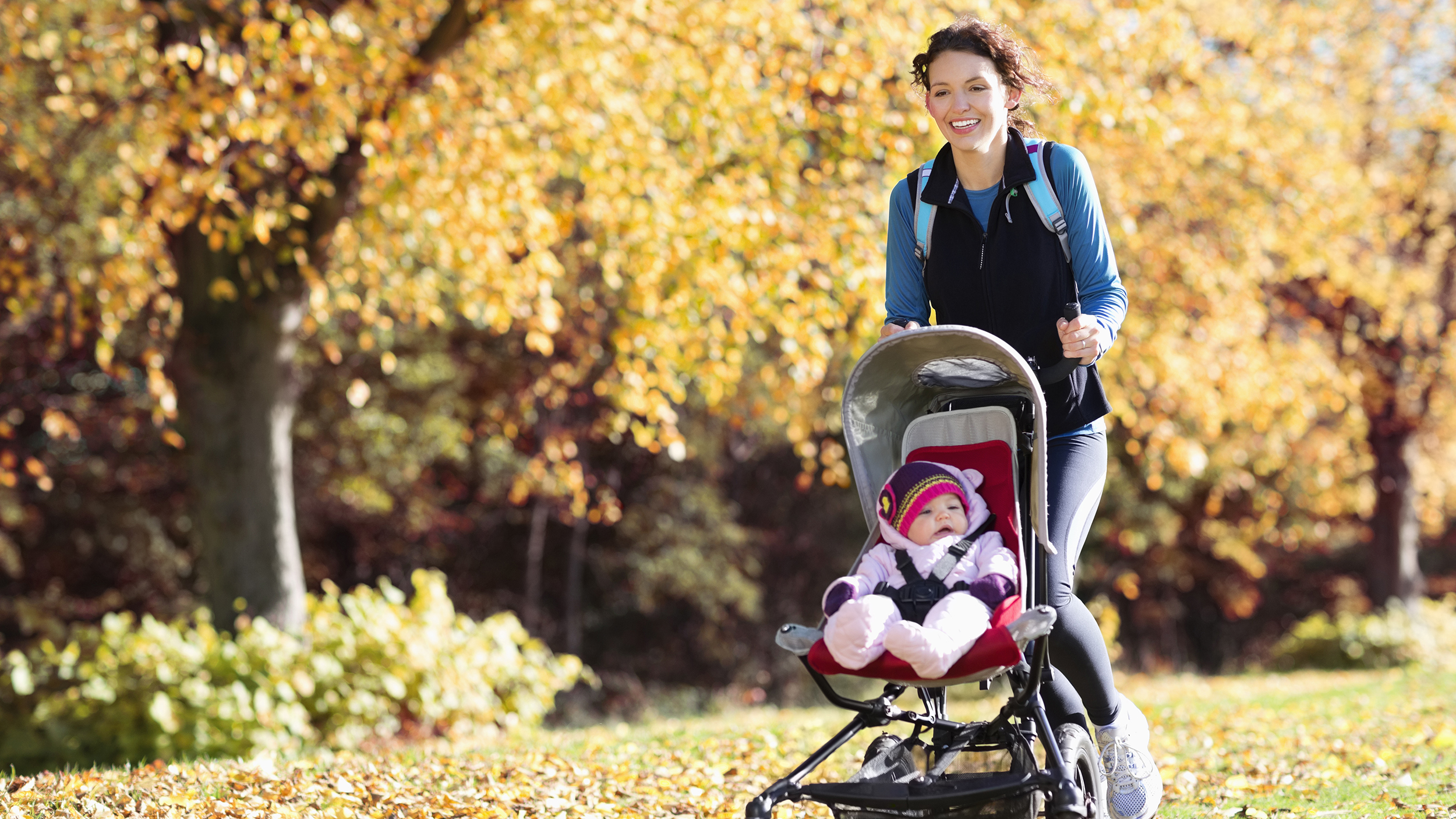
The couch to 5K concept isn’t only used by people who have never exercised or run, however. Many people are already fit in the previous week. Don’t be afraid to do the same week as many times as you need to; you will find it much easier to move through the programme and stay positive if you are comfortable in what you are doing.
You may also miss a whole week for an unavoidable reason, such as illness, injury or holiday (or even just life getting in the way). It happens; don’t worry about it. What you shouldn’t do is skip that week on the programme. If you have only missed one week and you found the previous week okay, then you could carry on where you left off. If you found the week before your week off a little hard, then repeat it before carrying on. If you have missed a few weeks, it is always better to go back, rather than forwards.
The couch to 5K concept isn’t only used by people who have never exercised or run, however. Many people are already fit in other areas and other sports, but have no experience with running. They may come to the programme as a way of building stamina or cardio fitness to complement their other activities. In these cases, their base fitness may help them to progress through the programme quickly. We would recommend that if you are new to running, regardless of your fitness level, you still follow the whole plan from start to finish, as your body needs to adapt to running and this is the best way to prevent injury.
But if you are finding it too easy, then what you can do is vary the pace. You could run your run sections faster, or you could run/jog, rather than run/walk. It’s all about being progressive, as this will pay off in the long term. The programme is also a good way for lapsed runners to get back into the sport, or for people coming back to exercise after injury or having a baby, for example.
You may also find that you are naturally quite good at running and that your pace is quicker than most beginners. If this is the case then it’s always possible that you might reach 5K sooner than the programme does. By the last few weeks you are running for up to 30 minutes in one go, which for some people will enable them to cover the full distance. It doesn’t really matter, as this plan is based on time and not distance or pace.
- Walking to lose weight: 7 tips to kick-start your fitness regime with a stroll
Couch to 5K: What are the benefits?
There are so many benefits to taking up running. For a start, and not insignificantly, it can improve your overall health in many positive ways. Being active helps to raise good levels of cholesterol, help your blood pressure and heart rate, give your immune system a little helping hand and improve your lung function.
There are also certain conditions that can potentially be prevented, delayed or improved through running. For those at risk of osteoporosis and have signs of being in the early stages, then running can help by building a strong body. Type II diabetics can also find that their health improves with running, or for those showing signs of developing the condition, running can be one way of delaying or preventing the onset. It’s also been shown that running could reduce the risk of having a heart attack.
These are all potential benefits and you may find that you have other related benefits when you start running. It’s also important to note that those with any of the mentioned conditions should absolutely get professional medical advice before embarking on the programme and be monitored by a GP when undertaking any exercise.
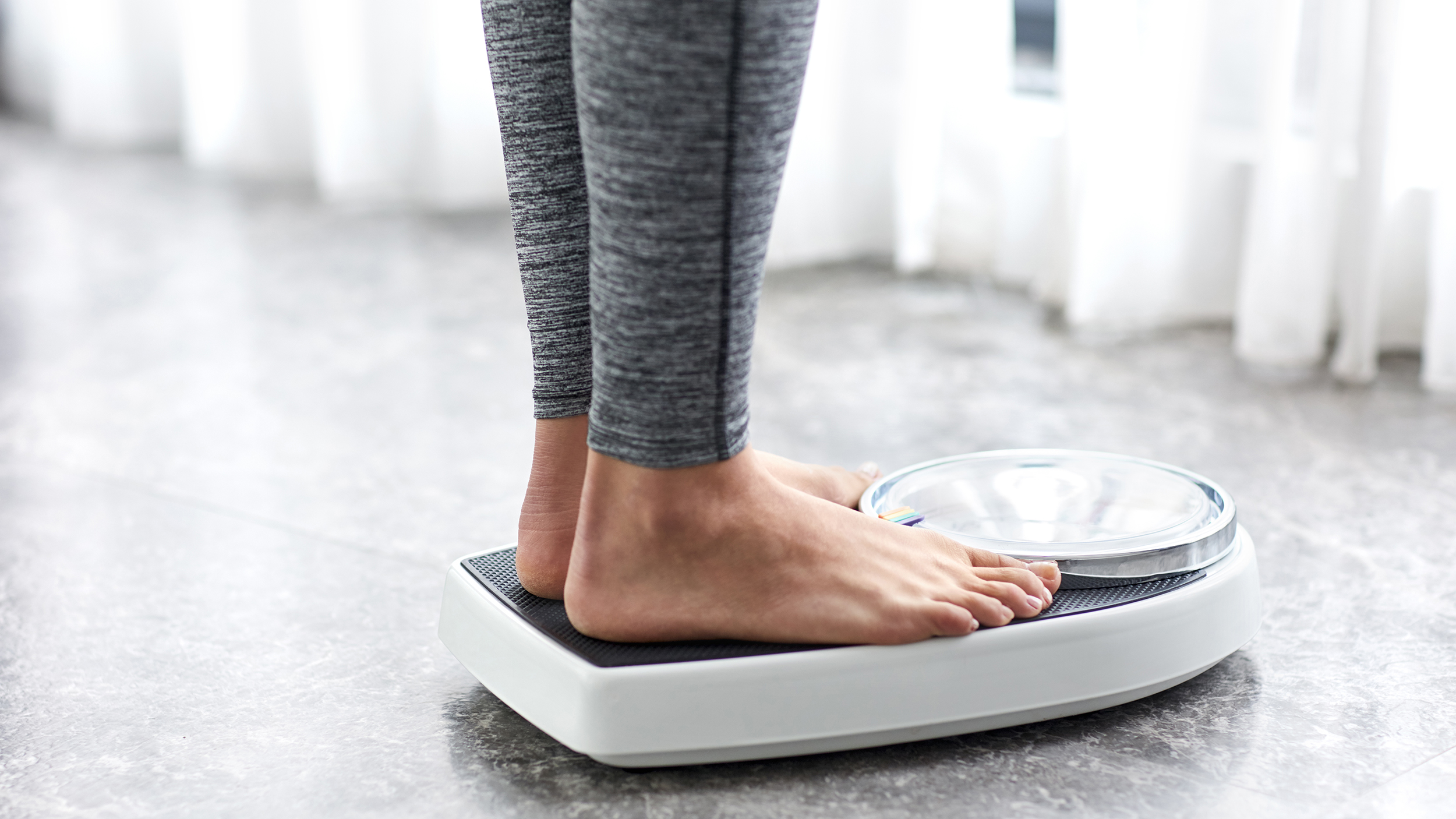
Running is often used as a weight-loss activity too. We have not designed this plan or written this content as a specific weight-loss tool, and that is not the intended outcome. However, any increase in activity levels is likely to have an impact on your weight. If you
maintain a healthy eating programme and fuel your running properly, then you may find that you do start to lose weight. Running is one of the most effective exercises for burning calories.
As well as the physical benefits, there are huge mental benefits. Running is often suggested to those suffering from some mental health conditions, such as depression, and for good reason. Running helps to lift your mood, increase energy levels, relieve stress, help you sleep and more. Just the act of getting outside when you otherwise wouldn’t, can be a really positive action.
4 Benefits of running
Here are our top facts about running and why it’s good for you:
- Running with others makes you happy: Don’t run alone! A survey of the England Athletics RunTogether Community (https://runtogether. co.uk/) found that 89% of all runners said they had “increased happiness as a direct result of running with others or in a group”. Group runners are also shown to be more likely to be regular runners than those who run alone, said the same survey.
- Running can improve mental wellbeing: We already know that running is good for our physical health, but it’s also amazing for your mental health, too.A poll by England Athletics (www. englandathletics.org) questioned 13,200 people over 12 months and 74% said that they found running good for their mental wellbeing. What better reason to get started?
- Age is no barrier: You are never too old to take up running! Don’t believe us? The oldest marathon finisher in the world, Fauja Singh, is now 106 and he only took up running in his 80s! Harriette Thompson, who has sadly died at the age of 94, was the oldest woman to finish a marathon at 92 years old.
- Running is more popular than ever: The London Marathon is a race that many people aspire to. So many, in fact, that in the ballot for the 2018 event, it achieved the highest number of applicants for any marathon in the world – 386,050 people! A marathon might seem a million miles away right now, but everyone started at the beginning once upon a time.
Should I go it alone?
A lot of people take on a couch to 5K programme on their own. If this is what works for you, then go for it! Many people enjoy the solitude of running, a chance to get out and have some peace. Being alone helps you to focus on what you are doing, as well as feel no pressure from anyone to run at a certain pace.
If you are alone, make sure that you pick a safe route for your runs, especially in the dark. Let someone know where you will be going and how long you expect to be. It is also worth carrying some ID with you, and if you have a pocket, then take your phone with you. If you are wearing headphones to listen to music, then make sure you are aware of your surroundings and can hear traffic noise.
You don’t have to do it alone, though. Just as some people thrive on the solo run time, others prefer the company of others when it comes to motivating themselves to go out for a run. You could ask a friend or family member to join you on your journey, to keep you company and to help you through the programme. It can be a nice thing to do with someone, as you can celebrate your victories together and help each other through the harder weeks.
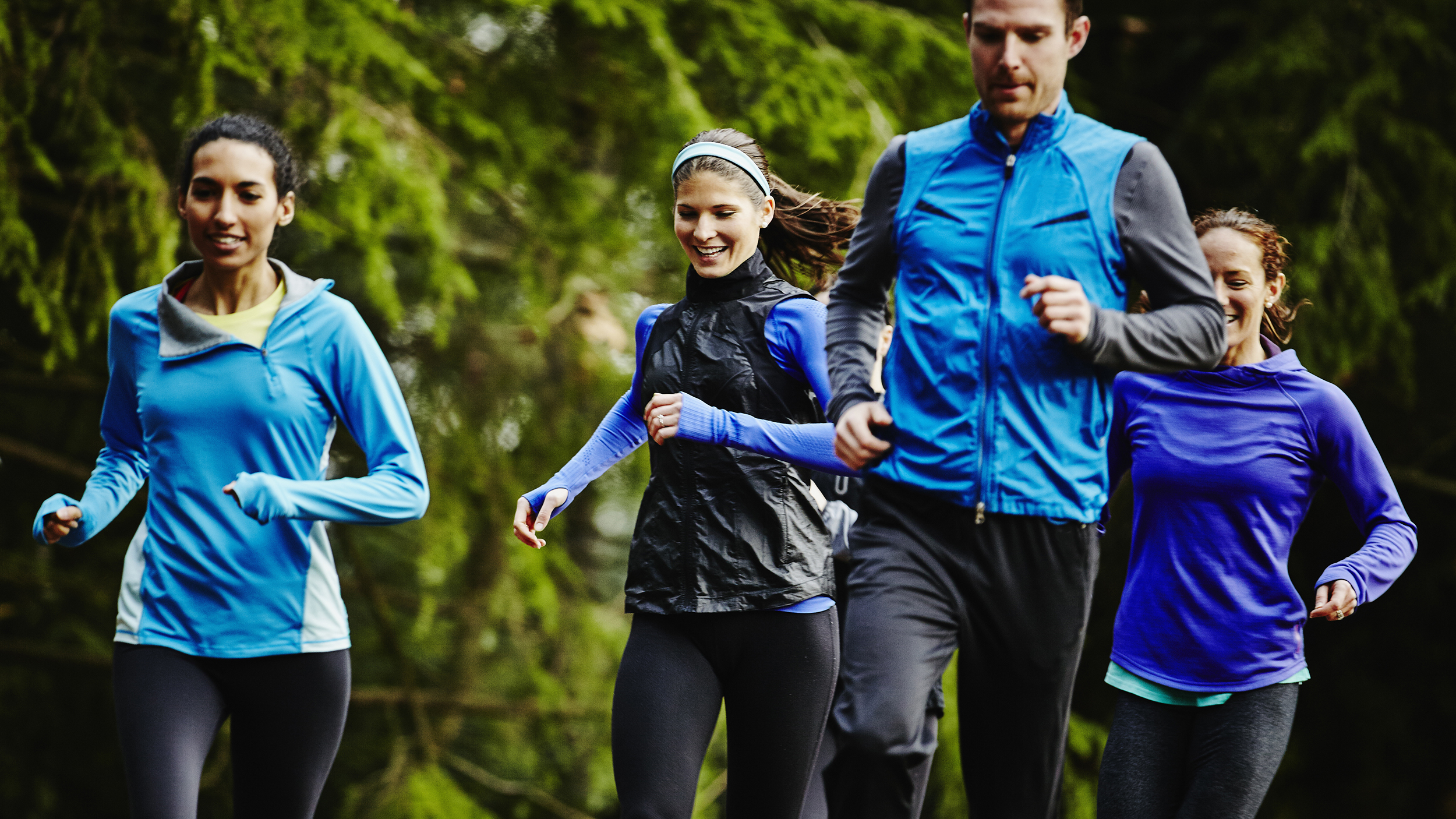
You could also look to see if there is a local running group for beginners that you could join. Many of them will follow a very similar structure to the one below. You could run one session a week with a group, and then follow the other two sessions from your plan on your own to reach your goal.
The hardest part is often not the running itself, but actually finding the time to do it! Sometimes you need to get a little creative, especially if you have kids. See if you can tie it in with your family. Older children might like to join in and help you with timing by being in charge of the watch, for example. Or they could come along on a scooter or bike. If you have a safe park, you could let them play while you run around the outside – safely within watching distance, but still getting your run done. Very young children could be taken out in a running buggy – you can get pushchairs designed for this very purpose.
Plan your graduation run
It might seem a while off, but in 10 weeks you could be graduating from the couch to 5K programme. Many people who undertake the programme find it beneficial to have a target in mind for their first 5K at the end of the training plan. For some, this could be a local race or parkrun (see the ‘parkrun welcomes couch to 5K runners’ boxout), where they will run the 5K distance for the first time. This can be a very good goal, as it gives you the motivation to keep going with the programme. However, for others, the thought of a public outing for their first 5K is terrifying. But you can still plan where and when you are going to do it, choose a nice route and use it as inspiration to get you through the programme.
It’s also nice to plan a reward for finishing the programme. If you enter a race, the medal and goody bag is a lovely prize. Alternatively, you could choose to enter a virtual run, such as those offered by Virtual Runner (www.virtualrunneruk. com/) where you run 5K at a time and place that suits you, submit your time and get sent a medal for your efforts – there are lots of choose from. Your reward might be something entirely different, like a nice meal out, or a massage. Whatever motivates you to keep going and gives you focus for the next 10 weeks!
What do I need?
Our final point is to look at what you need to start the couch to 5K programme. Running is one of the easiest sports to start with, as you need very little. If you have some sports clothes (or even just shorts/leggings and a t-shirt to start off with) and a pair of comfortable trainers, you are ready to go!
As you progress you may wish to invest in some proper running kit, though you don’t have to spend much. If you are going to spend money on anything, proper running trainers are what you need. A running or sports shop can help you pick what is right for you and the way you run. When picking clothes, try and choose technical materials, as these are designed to ‘wick’ sweat away from your body as you run, which keeps you cool. For women, get a proper sports bra! We can’t emphasise this enough – you will be far more comfortable when running.
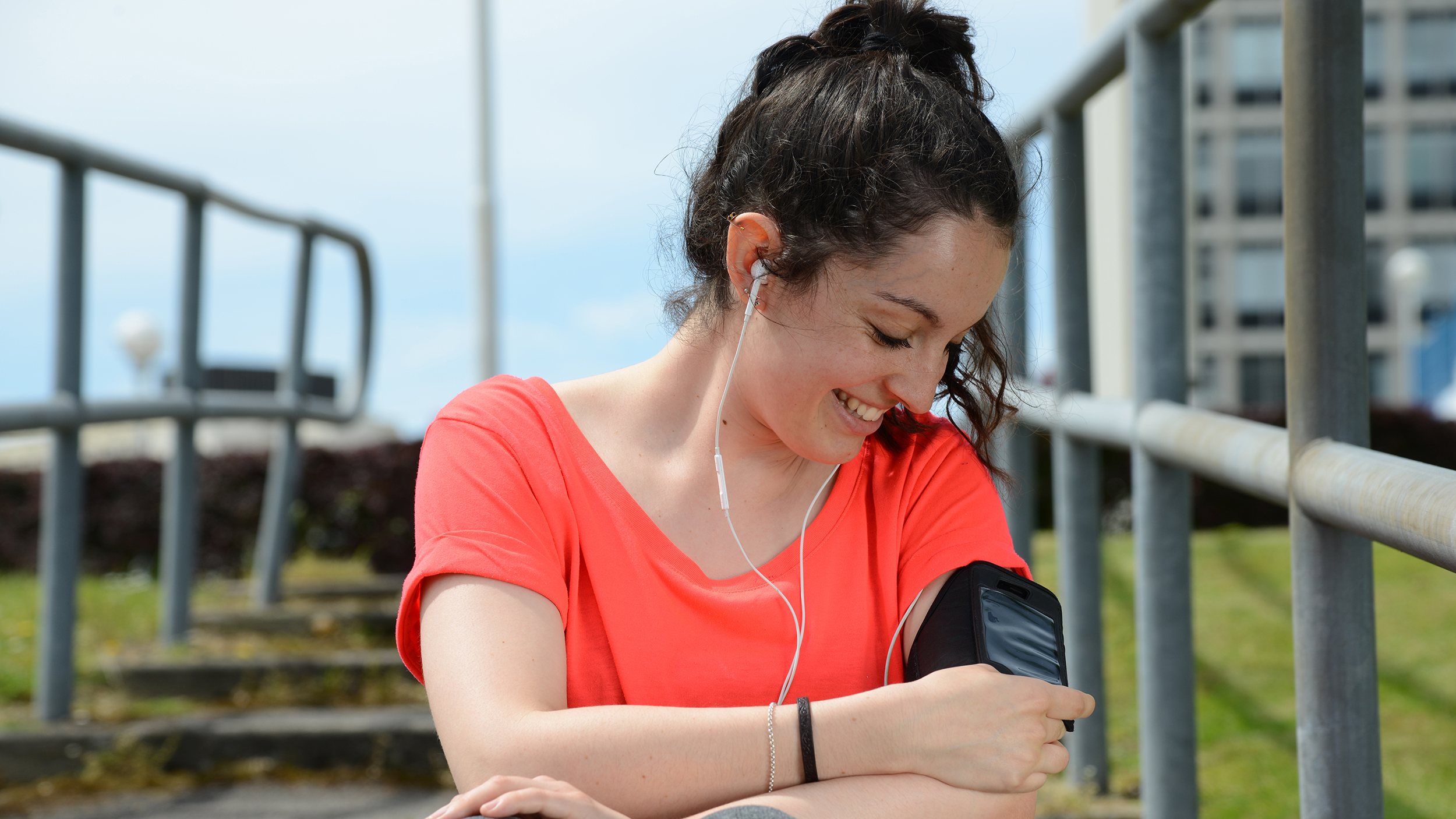
The other thing that you may want is a way to track your runs, so that you can see how far you have gone and monitor how you have progressed since the beginning. There are a lot of free apps out there that will do this for you. We like Strava, Map My Run and Runkeeper. You can also get GPS watches that track your run without using your phone and then sync to an app afterwards. If you have a smartwatch, you may already have this function, but it’s not something that is required to get started.
Hopefully you now have a better understanding of what the couch to 5K programme is and you’re raring to go! Good luck and enjoy the journey.
The ultimate Couch to 5K training plan
Covering all the basics to get you off the starting blocks and running a 5K race in just ten weeks, this guide has everything you will need – now really is the time to get running!
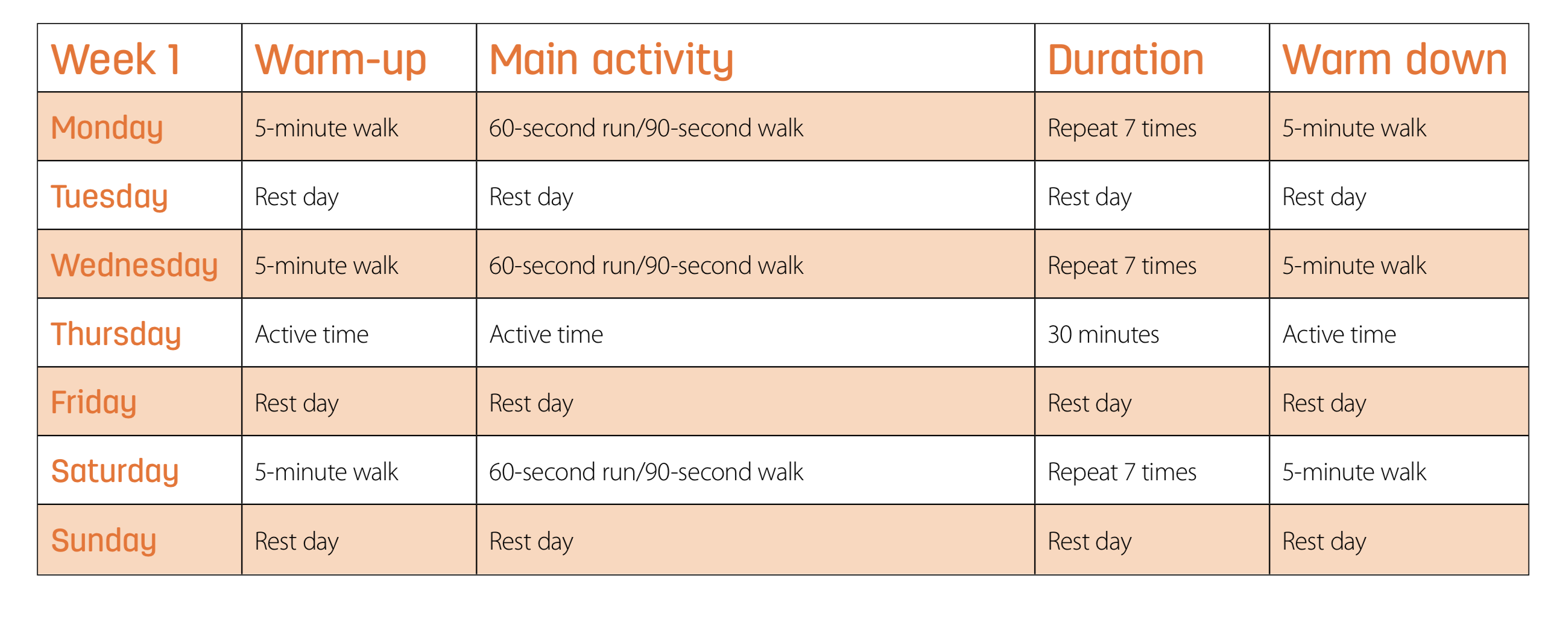
Week 1: Be clear on your ‘why’!
Time to lace up those trainers and start moving! In these early weeks, you may wonder how on earth you are going to run 5K in just ten weeks’ time, but trust the plan.
The week starts with a five-minute warm-up, and this is a perfect time to consider why you are doing this. Is your motivation to get healthier or back to fitness? To set a good example? Tone up? Meet new people? Prioritise factors like health and fitness over weight loss at this stage, as health is more than just a number on your scales. Use the warm-up as an opportunity to go somewhere quiet, where you feel safe and alone. Pick a time of day that suits you, your family and the environment.
The one thing to include in your warm-up this week is ‘high knees’. Find a flat path, ensure you are holding yourself upright, and do 20 fast high knees, alternating between each leg. Aim for hip height, but make sure it’s comfortable. This will increase your heart rate, as well as build muscle strength.
After your warm-up, break into a jog. Your speed does not matter, as you are starting to run. After 60 seconds, take a walk break for 90 seconds and repeat. Keep it simple – run, walk, repeat. If you cannot manage 60 seconds at this stage, then don’t be afraid to take it a little slower. It’s just about the motion for now. If you found it easy then fantastic.
On your five-minute warm down, plan your next run: where and when and how.
Stretch up high with your hands above your head, then lean left and right, holding for ten seconds in each position.
Now, go home and write that ‘why’ on some paper, and stick it somewhere that you can see every single. Your journey has started – you can do it!
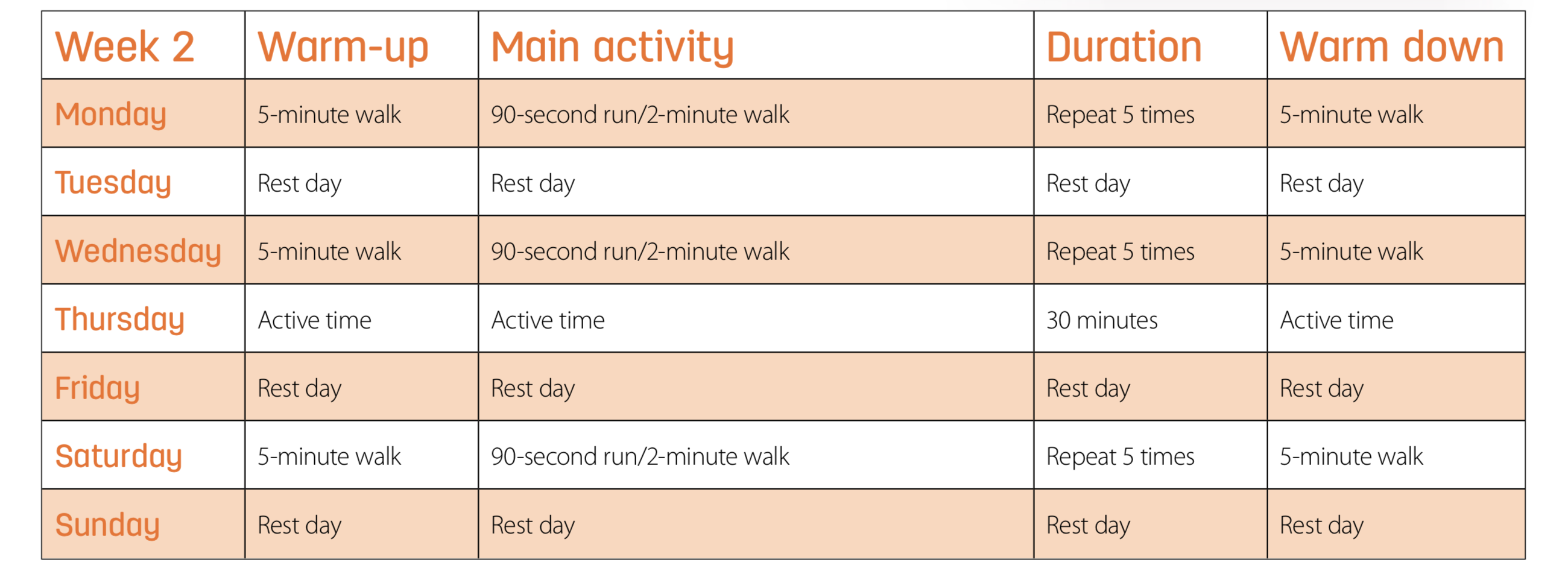
Week 2: Let’s get more active!
Now you’ve established your ‘why’, it’s time to think about how you are going to make it happen. Running is part of it, but it needs to come within a bigger package of activity. Can you include more walking or steps in your daily life? Can you move around more at work or home? Your goal this week is to find one new habit you can form that will become as regular as cleaning your teeth.
After your five-minute run, it’s time to add a bit more. As well as high knees in your warm-up, this week’s new exercise is karaoke to build on co-ordination. Step sideways with your left leg, then pass the right leg behind (still in sideways direction), the left leg moves to left and repeat. Alternate between the legs going behind and in front. Once you get the movement, speed it up and change direction.
Your target is a 90-second run. It’s longer, but a two-minute walk is a longer recovery time. Aim to be breathing heavily by the end of the 90 seconds so you know that your heart is working hard.
While you’re running, imagine you have a balloon attached to the top of your head, pulling you up and tall. By staying taller, you will become a more efficient runner overall, and will improve your posture to boot. Try and keep this in mind even when you aren’t running.
After your warm-down, complete the stretch with your arms up, and then find a curb or step for your calves. Place one foot fully on the step, and the other foot with only half on the step (so the heel is overhanging). Drop the heel down about 45 degrees so you feel a stretch on the calf. Hold this pose for 20 seconds before switching legs.

Week 3: Family and friends being active together
Fitness is so much more fun with company. This week, think about how you can include others in being active and helping you run. Can you run alongside the family on scooters/bikes? Can you play a ball game outside? Can you do hopscotch or tag? When you walk the dog, can you add in jogging sections? Those 90 seconds can go so much faster when you are enjoying yourself.
After your five-minute warm-up, it’s time for high knees, karaoke and a new flexibility exercise. Walk along, lifting your leg up straight in front of you (without bending your knees) and reaching your opposite hand over to touch your toes. Repeat six times on each side.
Now to get a bit of running in. Start with 90 seconds again, but this time it will be a shorter walk break. Then its three minutes running/ three minutes walking. This is really important – however, it’s only a guide. We are all different, and come from different fitness backgrounds and abilities. If you need a longer walk break, take it. If you find it fine, take a shorter one.
Your aim after each set should still be heavy breathing, so for the three-minute run, aim to be slower than 90 seconds so you can maintain that pace for longer. It may take a bit of practice, but that’s exactly what you are doing. This week is the first time you may have to do a different speed in the set, so it’s a completely new skill.
For your warm-down this week, after a stretch up and calf stretch using the curb, it’s time for hamstrings. Take your feet wider than hip-width apart, and lean down towards the ground so you feel a stretch going up your hamstring.
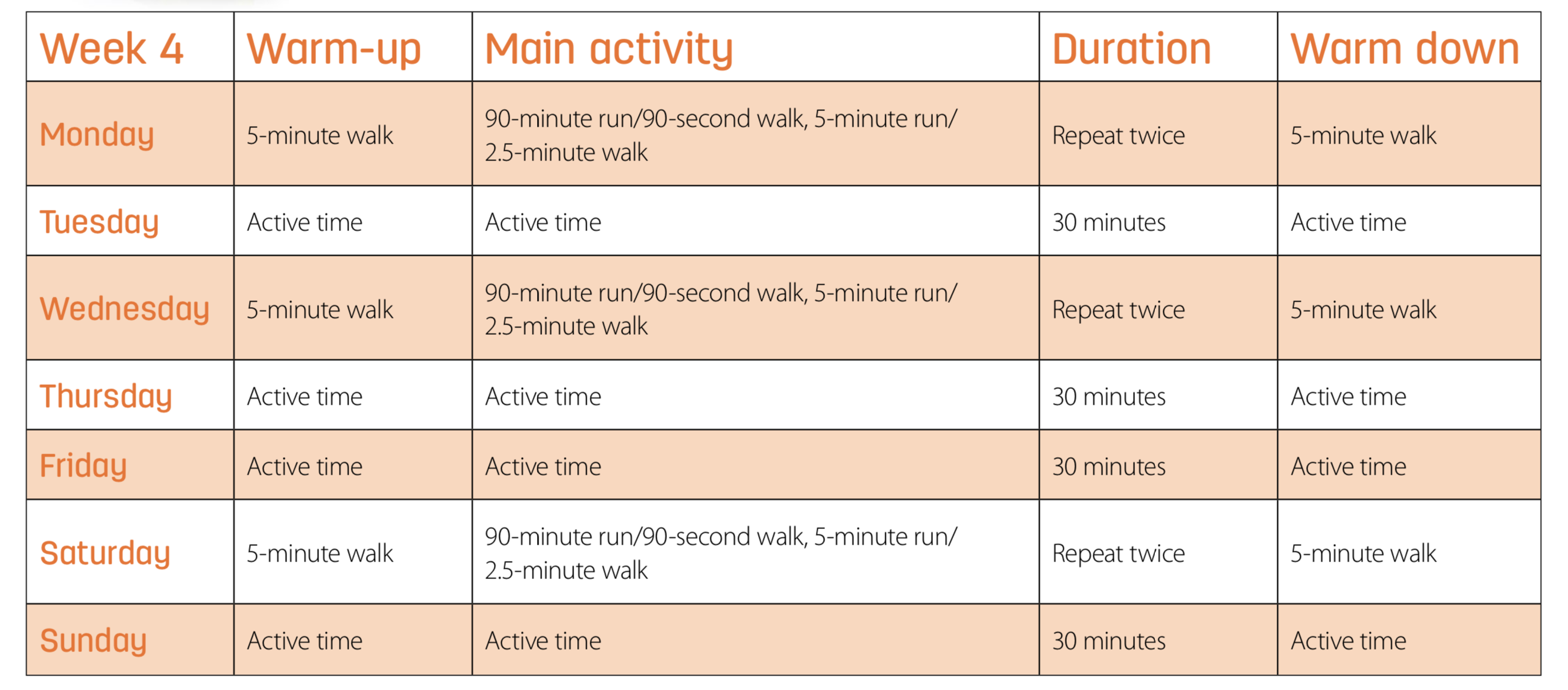
Week 4: You are becoming a runner!
Your body is starting to adjust to running. It may not feel easier yet, but gradually your muscles are changing to support your running. Remember, every time you place your feet down in a running motion, there is a lot of impact, so it’s a good time to consider if you have the correct footwear.
You could go to a running shop and have a gait analysis done. After a specialist has watched you running, they recommend trainers based on your natural ‘gait’. The most important thing is having trainers that fit you. We all have different feet and styles, so don’t choose something because it suits others or looks pretty. If you do buy new trainers, gradually ease them in so your body can get used to different support on your feet; walk in them before you run.
This week, after your high knees, karaoke and hamstring stretches, add in some heel flicks.
This starts with small running steps, then into ‘toe up, heel up’ motion behind you and close to the body. Ensure you are using running arms and are upright.
As you progress, you are continuing to build up endurance by going for longer. For variety this week, think about possibly using the environment as a gauge for distance. Running around a whole lake or field could be your target. Your primary aim is for two of the sections to be about a third longer than what you have already achieved, so think about how far you went last week, and make it longer. Using things to run to or around can help keep you moving longer.
As part of your dynamic stretches at the end of your run today (calves, hamstrings, and stretch up), also include quad stretches. While standing on one leg, hold the opposite ankle up towards your glutes, ensuring you stand tall and stay balanced.
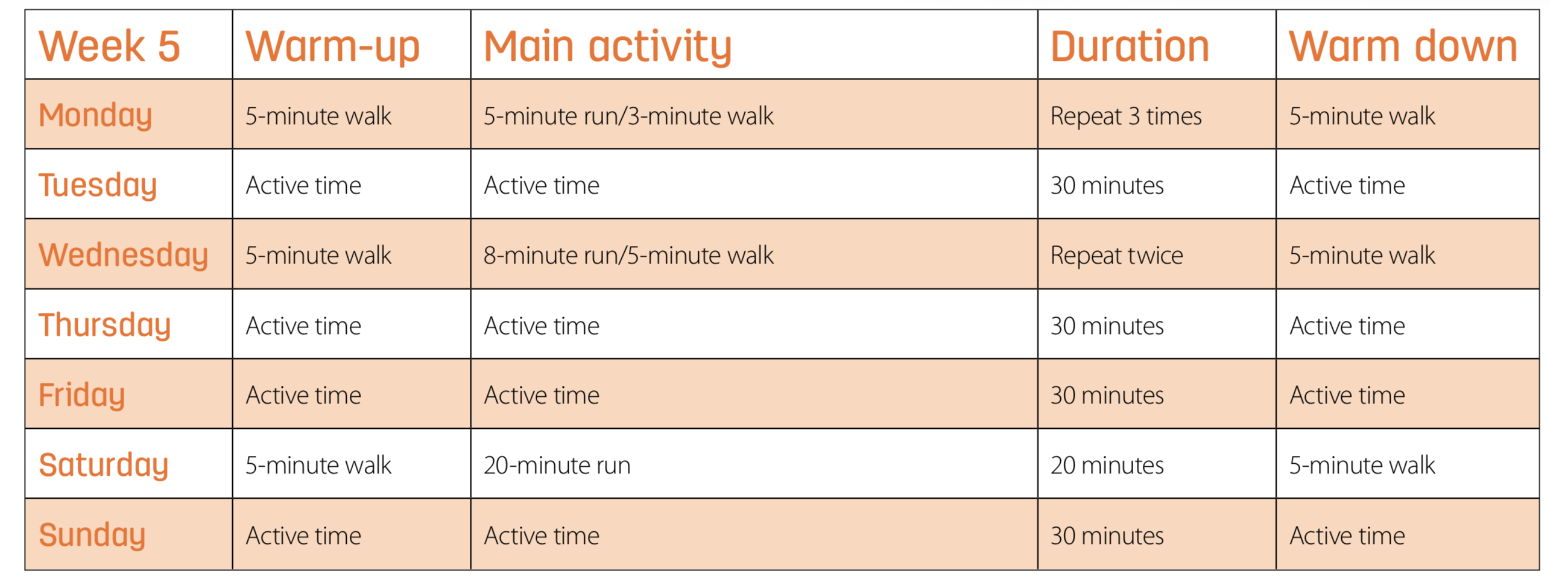
Week 5: Time to plan a race in perhaps?
Running is a social activity, and there are always a lot of local
events and races put on by various clubs, or even big corporations. If you are not aware of any races going on in your area, use internet search engines for a local 5K race that you could target.
This week, it’s time to overcome those remaining mental barriers to running. You have only been running a few minutes at a time so far, but you have now done all the groundwork with regards getting your body used to it. Don’t be daunted by the longer runs this week; you are ready for it! It’s the same running, only with fewer breaks.
It might be a good time to find a friend to run with, or put on some music or a podcast. If you are using headphones, make sure you’re in a park or closed road area so that you can hear what’s going on around you. Lace up, warm up, do the same exercises, hold your head up, and go!
You will need to go steady – speed is not your concern this week; it’s about endurance and running for longer without breaks. If you find that you are getting breathless quickly, ease off the speed. But you may find you settle into it and your body adapts to going that bit longer quite easily.
This is a good time to remember how far you have already progressed over the past four weeks. Having started at running for just 60 seconds, you are now aiming for a full 20-minute run.
As part of your warm-down today, after a pat on the back, stretch your abductors by sitting on the floor and placing the soles of your feet together, using your elbows to push down on your knees to increase the stretch.
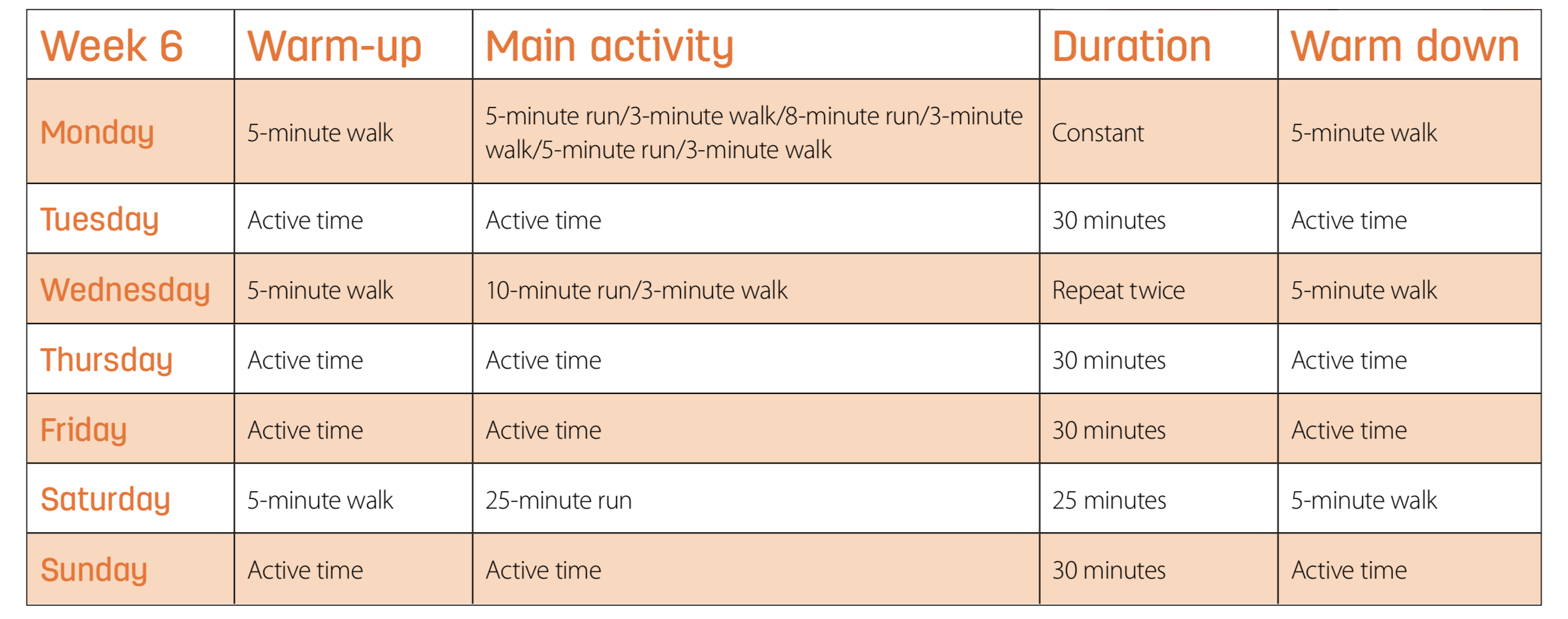
Week 6: The amazing and free weekly events – parkrun!
In 2004, Paul Sinton-Hewitt set up a 5K time trial run in his local park. A few years later, this single event has now expanded across the UK and into numerous countries around the world.
It’s a simple yet extremely effective idea. On Saturday morning at 9am, thousands of runners meet at their local parkrun, which is fully supported by volunteers. It attracts a wide variety of runners, from those walking briskly to local running celebrities.
Parkruns represent a supportive and fun environment that does amazing things to your running, as you are encouraged by all those around you to go that bit longer, faster and further. All you have to do to get involved is register for the first time, print a barcode to bring with you, and show up early enough to hear the briefing.
It doesn’t matter if you run it all or walk/ run it. Enjoy the atmosphere and joining with other runners. Look up your local parkrun and book it in the diary for the next few weeks – it’ll become a habit before you know it.
Your runs this week are again a mix of times, so it’s important to remember that you need to vary your pace. It’s a great time to start testing yourself with those three minutes – just how far can you go? Try and get your heart working really hard on the shorter ones, and aim for steadier longer runs.
Remember, your arms are key – move them faster and your legs will go faster too! Add into your warm-up some scissor legs, and see how moving your arms faster makes those legs get moving quicker!
On your warm-down, add in shoulder rolls, as you may find your arms ache more than before. If you do get a stiff neck when running, shoulder rolls can be done mid-run.
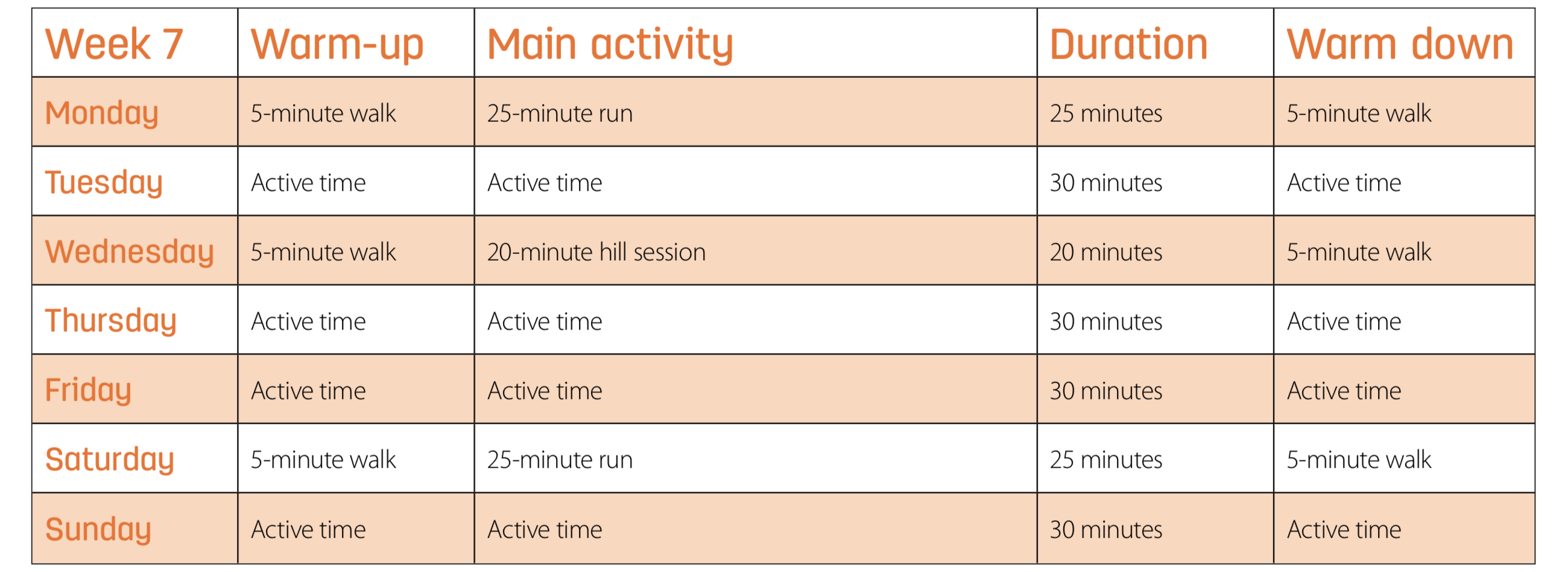
Week 7: Did someone say hill?
This week, as well as a longer, steadier run, it’s time to tackle something that is key to improving running in the long term: hills! Don’t think of them as hills, however – think of them as mounds of opportunity!
For one of your sessions, head to a hillier area near you, and find the longest, steepest hill you can. After all your warm-ups, add in skipping as well, with high knee action and big hops to get ready for those hills.
Tackle the hill in sections; find a lamppost or similar point to run to about a third to halfway up the hill. This is the first goal. Run to that point, ensuring you are pumping your arms hard and using those knees to get up, while looking up at where you are heading. On the way back down, jog slowly to recover. Repeat three times before finding another higher point to run to and repeat.
Hills are a great opportunity to think about the technique to help you get up. Your heart rate will quickly rise, and you will feel breathless, but that’s why they are such great training.
Your hill session should only be about 20 minutes, but ensure you do a good warm-up and warm-down of at least five minutes each side of the hills to warm up those muscles at the beginning to prevent injury, and stretch at the end.
As well as your usual stretches, stretch those glutes. The easiest way is to lie on your back with the soles of your feet on the floor. Place one foot across the opposite knee, put your hands under your leg above the knee, and pull towards the opposite shoulder.
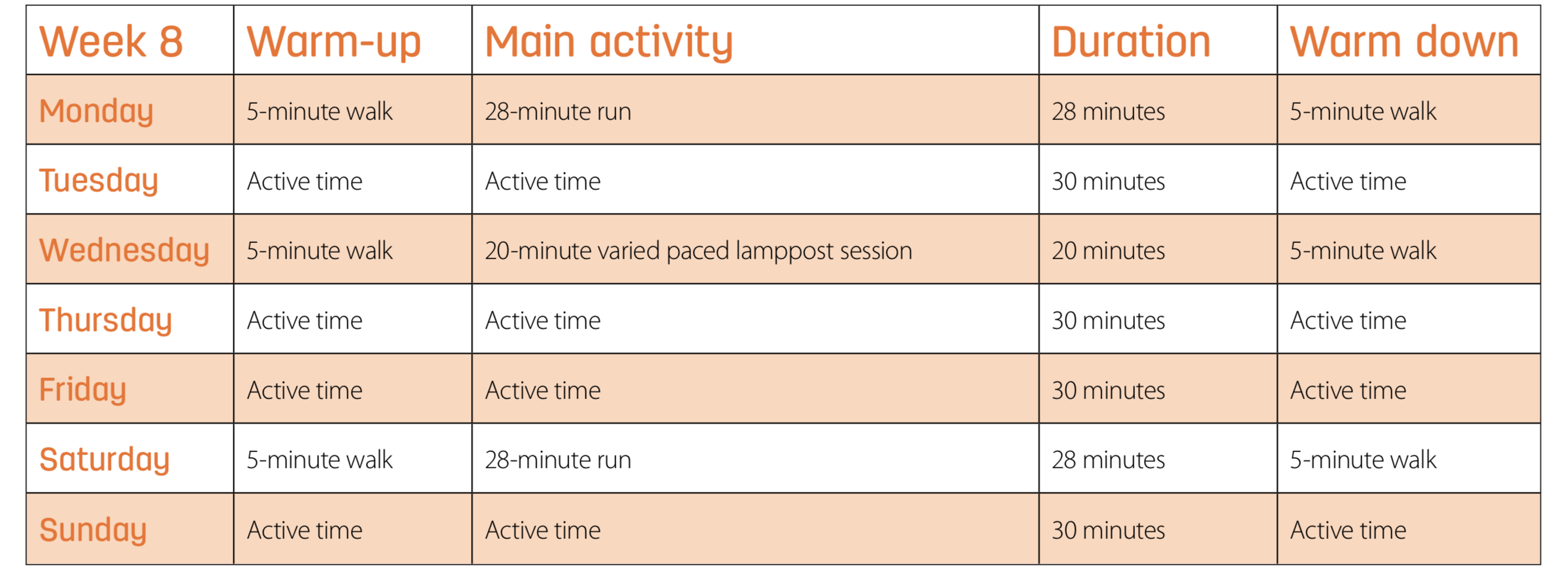
Week 8: How are you nourishing your body?
As you run this week, it’s time to reflect on how you nourish your body. What are you putting into it to fuel you every day? Are there any simple changes that could make a big difference? Could you reduce your alcohol intake? Add in more vegetables or fruit? Eat less processed food? Eat less unhealthy snacks in the evening?
It’s all about enjoying your food while making sure your body gets all the nutrients it needs. At this stage, you shouldn’t need to take in extra calories because you are running, but make sure you hydrate well and choose food that will aid your muscle recovery.
During your runs this week, as you warm up add in some arm circles. Move one arm in one direction, and the other in the opposite. It takes some coordination at first!
During one of the long runs, try adding in some varied pace running. For a simple way to vary your pace, use lampposts, benches or other regular landmarks. As you pass one, speed up to the next one, then slow down to the next, and so on.
As you stretch your calf using the curb, bend the knee of the foot that is off the curb a small amount. Adjust your knee so you feel the stretch in the lower part of your calf.
As you warm down, take time to reflect on how in only eight weeks you have progressed from being a non-runner. Think about planning a new route for your next run – one that’s perhaps not so flat or quiet to challenge you!
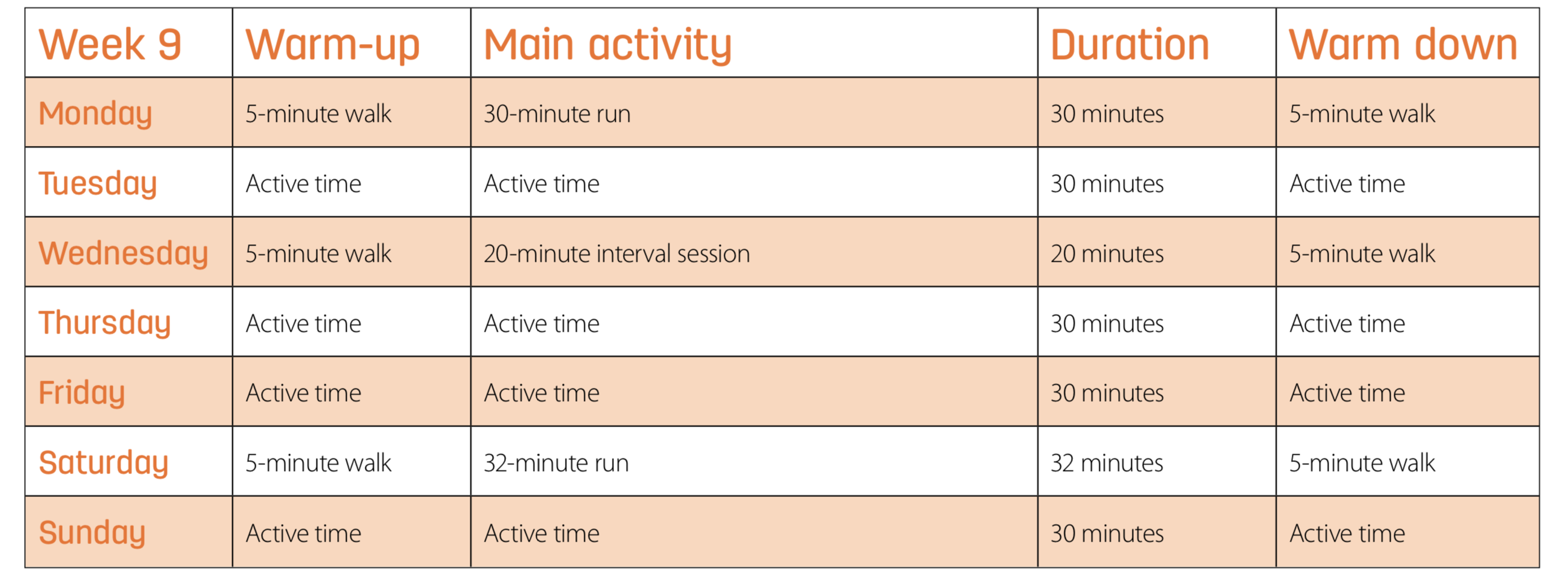
Week 9: Would a running club or group help me?
Now that you are well and truly off the couch, the option of joining a local running group is something to consider. There are so many fantastic ones out there, so do your research.
The annual cost of membership is usually only about the cost of a month’s gym membership, so they offer good value for money. They are run by volunteers, but will have trained coaches and leaders. Find out about your local clubs – when does the club meet and what sessions do they do? Are they an affiliated club? The benefits of a club being affiliated can be found by looking at the official England Athletics website. What support can a club offer you as a new runner? You can always trial the sessions a club offers, so contact them directly and talk to them about what they can offer you.
One of your sessions this week is intervals. This is a fantastic way to gain speed by running faster for shorter periods of time. Find a loop of approximately half a kilometre, or a route that will take about 3-4 minutes. After a good warm-up, set your timer and run the loop at a fast pace. You want to finish unable to hold a conversation until you have taken a breather.
After you feel your heart rate has returned to a level about equivalent to during your warm-up, repeat the loop. Your aim is to complete each lap in the same amount of time as the previous one, finishing needing to take a break.
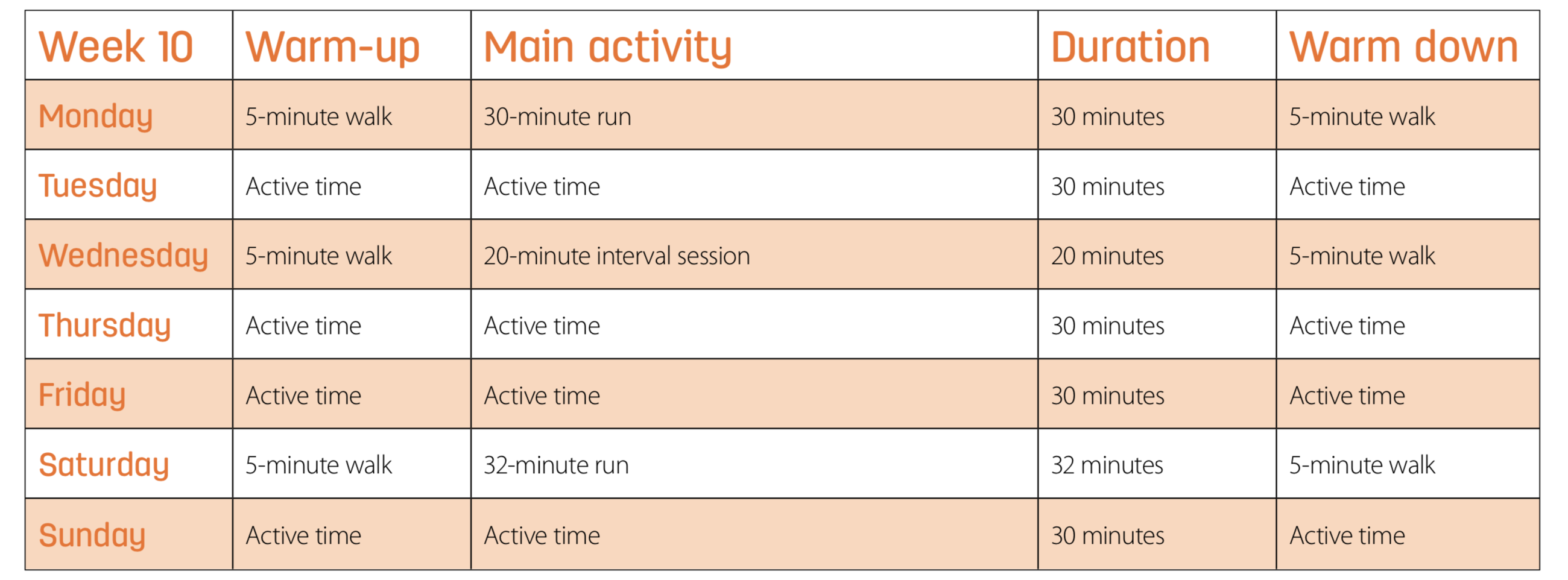
Week 10: Hit the target and plan new goals
You can plan your 5K route by using websites such as Map My Run, or even Google Maps. If you can, use a correctly measured course such as parkrun, or your local park may even have a 5K route marked out.
Remember to still warm up well and add in a power move to get that heart rate going. A great one is star jumps. Start in a leaning-over position, your hands on your toes and feet together. With a big power move, jump up into a star and back into your starting position.
During your first full 5K run, remember to start at a really steady pace, and to keep it steady throughout. Time yourself so you can write it down later, as this is only the starting point. If you have come this far in just ten weeks, think about how far you can go with months of training.
It is now time to start to think about your next goal: perhaps it will be a race, a 10K, joining a club, improving your time at weekly parkruns – the choice is yours.
As you think about your next goal, your training plan over the coming weeks should include all the things you have learnt so far. Include a slow steady run each week which could get gradually longer; a second run could be intervals or hills (shorter and higher impact). Add in a third run of your choice. If you can, still include other types of fitness such as swimming, cycling, gym classes or sessions. Speak to a personal trainer about how to complement your running with some alternative exercises. Don’t lose momentum even after you have reached the 5K distance. This is just the beginning.
Be really proud of all the training runs you have managed over the past 10 weeks, especially when you didn’t feel motived or the run was extra tough. Congratulations on becoming a 5K runner!
Launched in 2020, Fit&Well.com is all about helping you meet your health and fitness goals in ways that are fun and achievable. With news and features on fitness, weight loss, running, nutrition, yoga, wellness and more, we're committed to helping you wherever you are on your fitness journey. We break down the best fitness tech, with reviews, buying guides and the latest deals on fitness and wellness kit, from dumbbells to diffusers.
We cater for all difficulty levels here. It doesn't matter if you're a beginner in the world of fitness or you're gearing up for your tenth marathon: we're all moving towards the same goal – creating a healthier, happier you. From guides on getting started doing walks around the block, to creating the perfect work-from-home space, to eating to fuel your first triathlon. It's all here.

